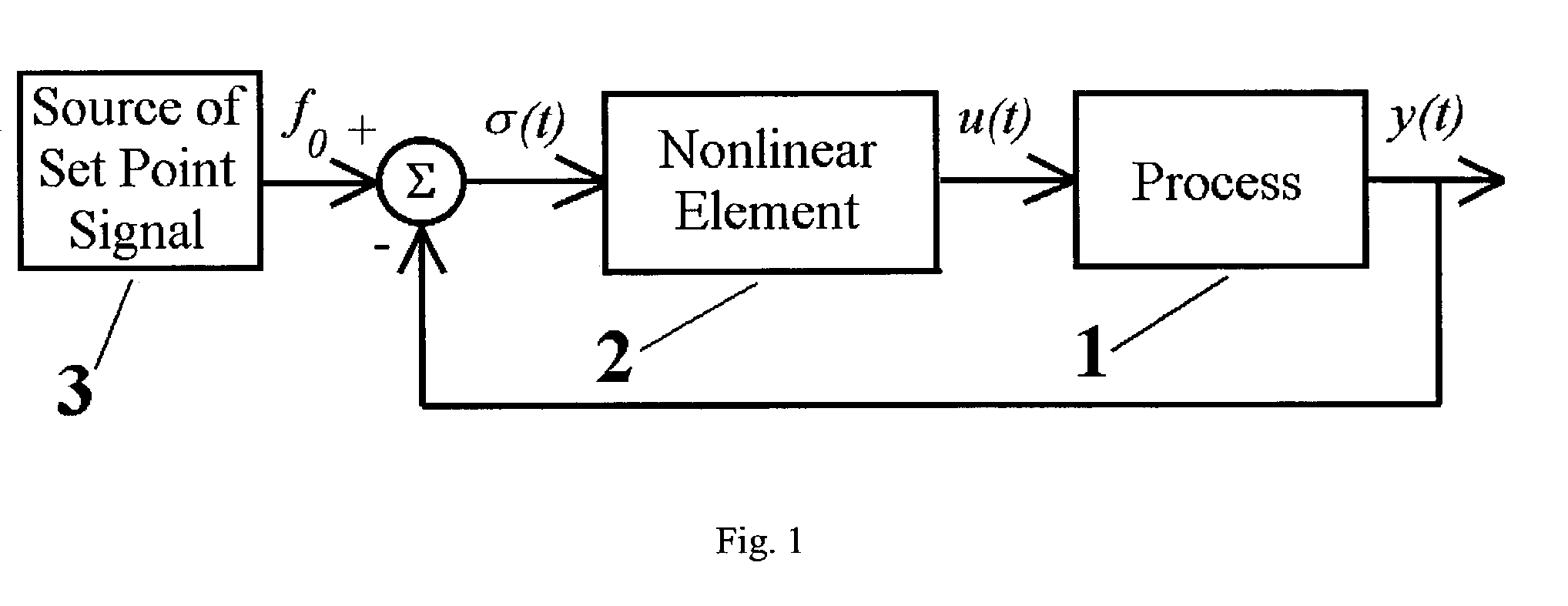Method and apparatus for tuning a PID controller
a pid controller and controller technology, applied in the direction of electric controllers, controllers with particular characteristics, data processing applications, etc., can solve the problems of source of inaccuracy, signalization errors in the ultimate gain and ultimate frequency approximation, etc., and achieve the effect of eliminating the source of inaccuracy—on, simple analytical formulas
- Summary
- Abstract
- Description
- Claims
- Application Information
AI Technical Summary
Problems solved by technology
Method used
Image
Examples
example
[0086]The following example illustrates an application of the method as well as is realized with the software, which actually implements the described algorithm and formulas.
[0087]Let the process be described by the following transfer function, which is considered unknown to the autotuner and is different from the process model used by the autotuner:
W(s)=0.5 exp(−0.6 s) / (0.8 s2+2.4 s+1)
[0088]The objective is to design a PI controller for this process with the use of first order plus dead time transfer function as an approximation of the process dynamics.
[0089]Simulations of the asymmetric relay feedback test and of the tuned system are done with the use of software SIMULINK® (of MathWorks). The block diagram is depicted in FIG. 6. Blocks Transport Delay 1 and Transfer Fcn 2 realize process model. The control is switched from the relay control (blocks Sign 3 and Gain 4) for the asymmetric relay feedback test to PI control (blocks Gain15, Integrator 6, Gain27, Sum18) by the Switch 9 d...
PUM
 Login to View More
Login to View More Abstract
Description
Claims
Application Information
 Login to View More
Login to View More - R&D
- Intellectual Property
- Life Sciences
- Materials
- Tech Scout
- Unparalleled Data Quality
- Higher Quality Content
- 60% Fewer Hallucinations
Browse by: Latest US Patents, China's latest patents, Technical Efficacy Thesaurus, Application Domain, Technology Topic, Popular Technical Reports.
© 2025 PatSnap. All rights reserved.Legal|Privacy policy|Modern Slavery Act Transparency Statement|Sitemap|About US| Contact US: help@patsnap.com



